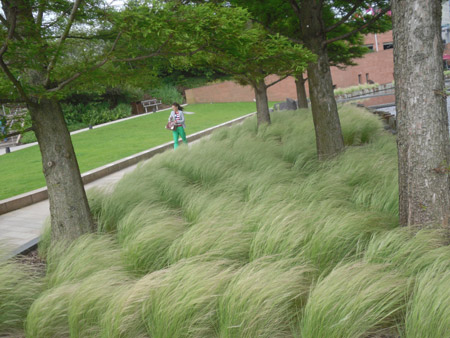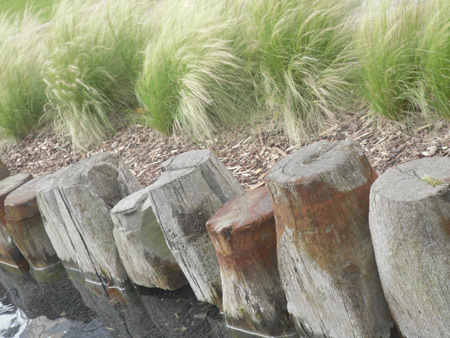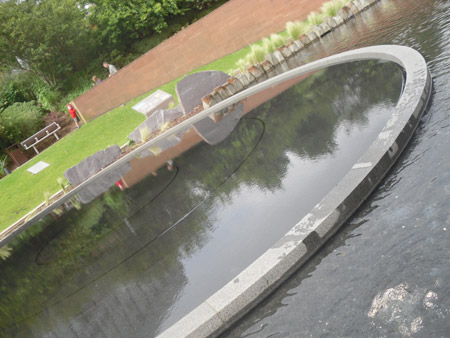
| HOME |
| NERVE |
| REVIEWS |
| ARCHIVE |
| EVENTS |
| LINKS |
| ABOUT US |
| CONTRIBUTORS |
| BACK ISSUES |
| CONTACT US |
 |
 |
 |
Fireweed*
By Sandra
Gibson
Photographs by Geoff Edwards
Holding the Edge at the Waterfront
July 2012
The marzipan smell of newly mown grass sweetens our summer days.
In our collective mind, grass is the colour of our island home, the green focus of our threatened villages; the flower-jewelled backdrop to our nostalgia about Maypole dancing and the stuff on which we pitch our hopes, year after year, in the vain chance that summer rain, footfall and tent pegs will not transform it into churned up brown stuff. Sports fans take home bits of turf trodden by their batting heroes; gardeners obsessively-compulsively keep it pristine from renegades and there are sentimental songs about being buried under it.
Grass is a plant where the flower is de-emphasised in favour of the quality of the leaf blades yet it was our elemental staple food: the dancing seed heads delicately held on slender necks provided a prototype for flour. And grass is the pioneer settler at the edge of water, its roots holding the sandy terrain and stabilising it for more varied colonisation. In the past our island inhabitants must have climbed sand dunes to peer through it, scouring the horizon for invaders.
The clumps of blue-green grass planted in the new development at Liverpool One are evocative of this water’s edge feeling, and an appropriate choice for a sea front. Planted near the three water features, the marine wind riffles through it, making it resemble the glaucous sea waves of a northern climate. It bows and catches light; it bows and recovers and responds to the currents of air and is interspersed by the rigid mid-green spears of iris leaves. And the same breeze ruffles the rill, picking up points of water, fragmenting the light reflected in the areas of concentric movement caused by underwater surges, all in contrast to the smooth stillness of the circular pool, its shallow sheen of water mirroring the sky. And then! See the fountains forming a column of perpendicular water, opaque through movement, magnetising youthful energy, sinking then ejaculating to screams of delight.
To read other Fireweed columns click here
*Also known as Rose Bay Willow Herb, the prolific wild flower called Fireweed, five feet tall with spikes of magenta flowers, cheers the hearts of those whose cityscape has become a bomb site or whose buildings have been cleared by machine. The dormant seeds spring to life after destructive events such as forest or man-made fires, hence the name, Fireweed. This occasional column will celebrate the persistence of wildlife in urban conditions.